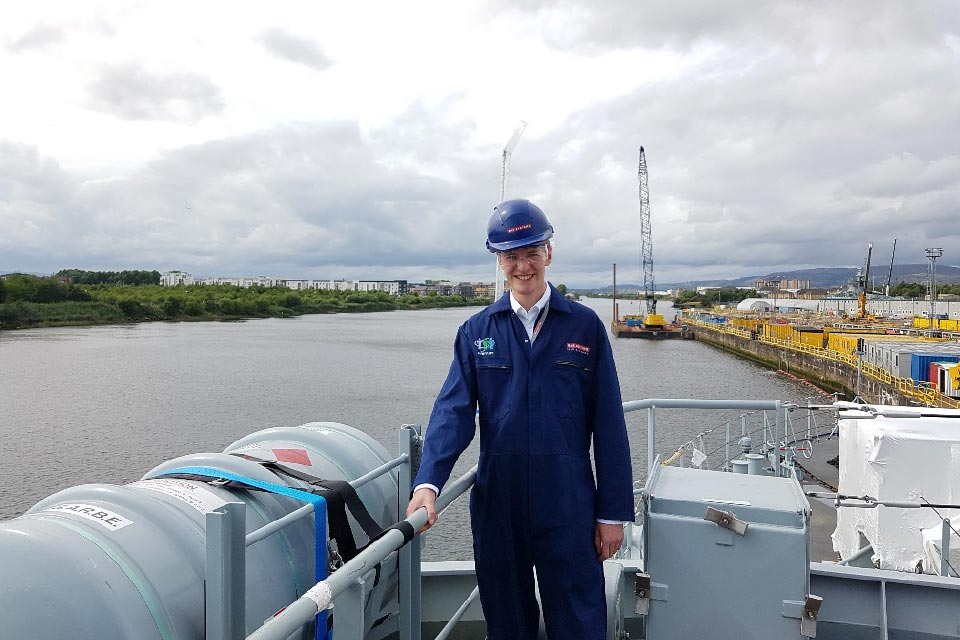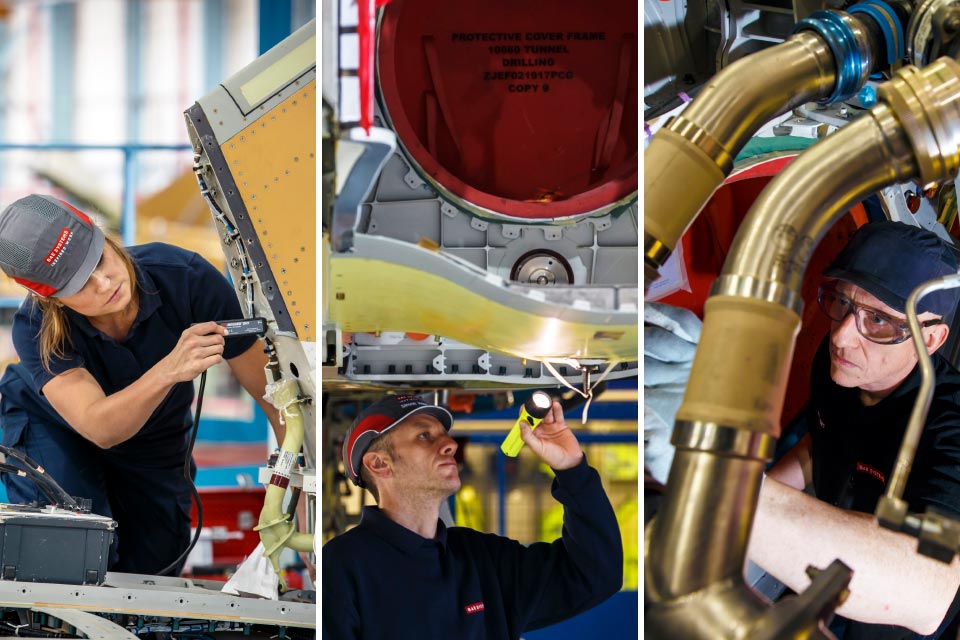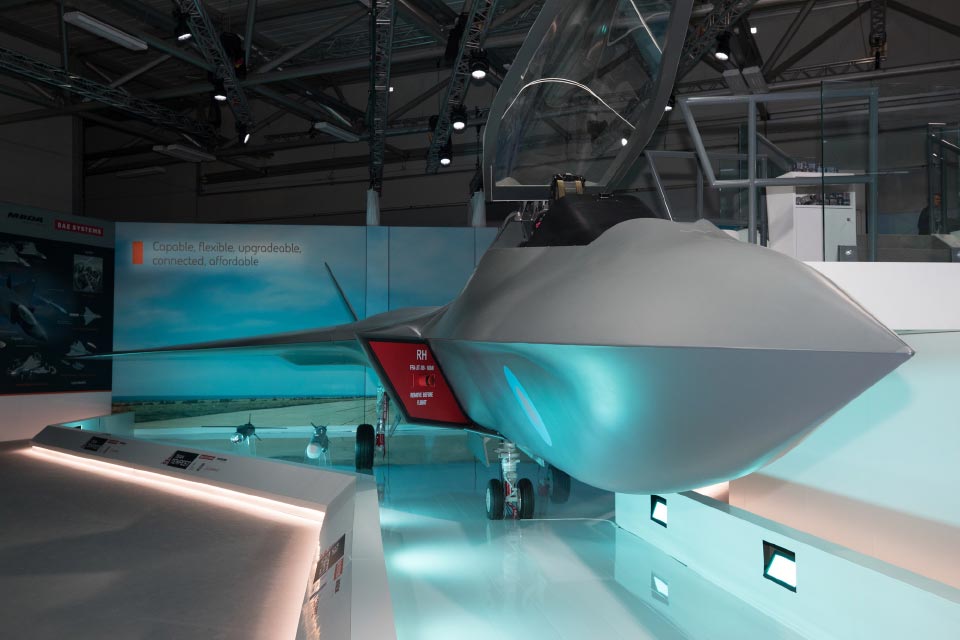Above: BAE Systems is among the world's biggest makers of nuclear submarines - such as this Astute vessel taking shape in BAE's Barrow factory
BAE Systems, the defence company which is among the UK’s biggest manufacturers, has appointed a 23-year-old engineer as "entrepreneur in residence" to help promote a drive to boost collaboration and innovation.
George Edwards is charged with encouraging other engineers in the business – which makes military hardware from submarines and missiles to warships and jet fighters – to be more open to new ideas from the likes of Microsoft and Amazon as well as small start-ups.
 23-year-old George Edwards has started a job at BAE Systems with a special brief to help foster an innovation culture
23-year-old George Edwards has started a job at BAE Systems with a special brief to help foster an innovation cultureWhile Edwards is just one among the 22,000 engineers and technical staff who work for BAE in Britain, the move indicates how even in big and conservatively managed businesses intriguing new opportunities can open for young people. Made Here Now aims to highlight such possibilities.
A key attraction to BAE of Edwards – and which marks him out from the many young graduates and apprentices in the rest of the business – is that he started his own technology enterprise when he was 17 and still at school. Edwards runs the eight-person Make Sense for roughly half the working week, with the rest spent at BAE.
BAE says it hopes that Edwards’ experience at the start-up can bring an “outsider’s perspective” to developing technical ideas. Edwards says: “I am looking…[at external businesses]…that may have great technology that we [BAE] can use. We could form a link with such companies through partnerships or making an investment.
“My role…entails first identifying businesses where we could form these sorts of ventures and then developing ideas for how the partnership could work.”
Edwards’ appointment has emerged as BAE comes under pressure to make the most of its wide range of technologies and to become more cost-effective in using them in work for its mainly government-owned customers. Defence budgets globally are being squeezed as part of spending constraints.
 BAE Systems is among the UK's biggest provider of engineering jobs and in 2018 took in 500 apprentices
BAE Systems is among the UK's biggest provider of engineering jobs and in 2018 took in 500 apprenticesTo help in its technology effort, BAE is a huge provider of engineers and technical staff. In 2018 BAE recruited roughly 500 apprentices and 300 graduates. It has some 2,000 apprentices and 500 graduates in training in the UK – where it employs just over 34,000 people in all disciplines, comprising about 40 per cent of its global workforce.
Nick Cunningham of Agency Partners, an investment research group specialising in aerospace and defence, says that over the next few years BAE is expected to boost its spending on new technologies to give itself more of a competitive edge.
The spending is likely to come in disciplines such as “stealth” systems (hardware and software to make military equipment invisible to radar), autonomous aircraft, artificial intelligence and cybersecurity. In all these areas, BAE might find it hard to create new ideas purely with its own resources.
As a result, says Cunningham, bringing in an outsider such as Edwards “could be one part of the effort to help the company to take on new thinking and move ahead of rivals”.
The appointment has been orchestrated by Nigel Whitehead, a long-serving BAE executive who at the start of 2018 started as the company’s first chief technology officer. Whitehead says: “Technology and innovation sit at the heart of our business…attracting and developing diverse talent is vitally important to encourage new and innovative ways of working and embrace disruptive and emerging technologies.”
Whitehead’s effort to promote innovation must fit in with BAE’s generally conservative approach. Defence companies are often reluctant to collaborate on technology with non-military businesses on secrecy grounds, as well as special factors related to equipment reliability.
 The defence giant is working on a sophisticated new fighter jet called Tempest that could operate as a drone and cost £2bn to develop
The defence giant is working on a sophisticated new fighter jet called Tempest that could operate as a drone and cost £2bn to developOne of the biggest projects BAE has underway is an advanced combat aircraft called Tempest, which would be flown by a pilot or operate autonomously as a sophisticated drone. The vehicle – which could cost as much as £2bn to bring to production and see service in the 2030s – would use new ideas from novel structural materials to “smart” weapons guided by artificial intelligence.
Edwards is working for BAE for three days a week, as part of a 30-strong team engaged in “engineering product management” reporting to Whitehead. The rest of the time he is at Make Sense where he is chief executive.
Make Sense (formerly Gas Sense) concentrates on collecting and analysing data from manufacturing operations and linking the data to the IT systems, for instance, to help connect manufacturing operations with sales and distribution as part of the “internet of things”. Its clients include several big consumer goods makers, such as the US cosmetics group Coty.
According to Nicole Humphrey, founder of Direct Talent Source, a recruitment firm specialising in engineering, many technology businesses are more interested in taking on people such as Edwards with a background that “might not fit into their traditional job profiles” to bring in fresh ideas and facilitate innovation.
Discussing BAE, Edwards says: “Even with some of the world’s leading engineers and technologists within the business, there’s always opportunity to see what other innovative technology companies out there are developing that might be of help. For the world’s pioneering tech leaders you have to look to companies such as Google, Microsoft and Amazon. These sorts of companies are a key source of innovation and it’s important for us to look to the outside world to find new ideas.”
Part of Edwards’ career path involved a decision while still at school not to go to university. “I knew if I went to university, I’d find it very difficult to run my business as well,” Edwards says. “I love technology and I love business and I love manufacturing. So I decided to concentrate on this.”
Edwards had started Make Sense on the back of ideas while studying design and technology at King’s School, Canterbury, a public boarding school. He says he was “enormously fortunate” to be at a top-rated school with the money to pay for necessary equipment and teachers. Graham Swindley, who taught Edwards, says that at a young age he showed “enthusiasm for solutions that worked and dogged determination to make them work”.
On the wider effort to foster more of an interest in technology and engineering among school children, Edwards says: “I think an enormous amount has been achieved in the past five years in terms of promoting engineering within schools, through companies’ own initiatives…and [government] programmes. People talk a lot more about engineering and manufacturing than they used to which shows that some of the promotional efforts are beginning to take effect.”
